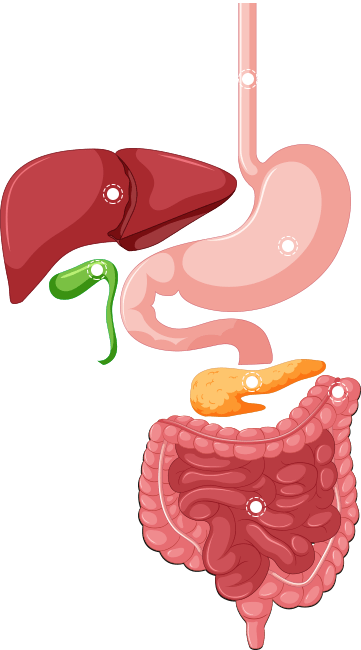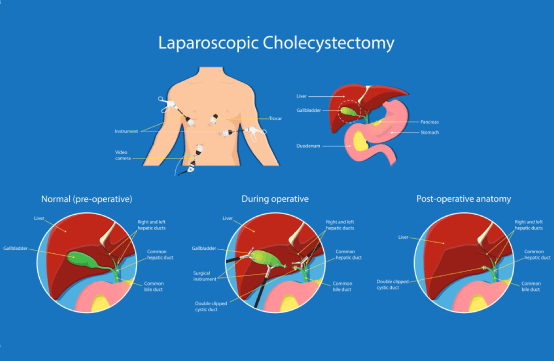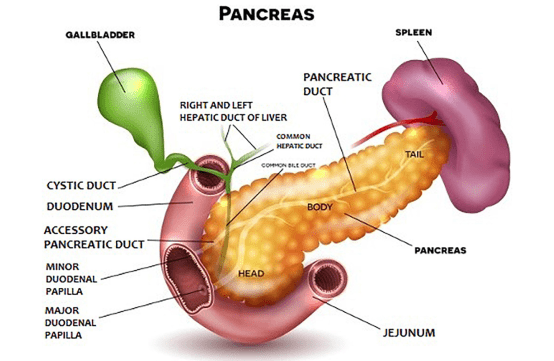DISEASE
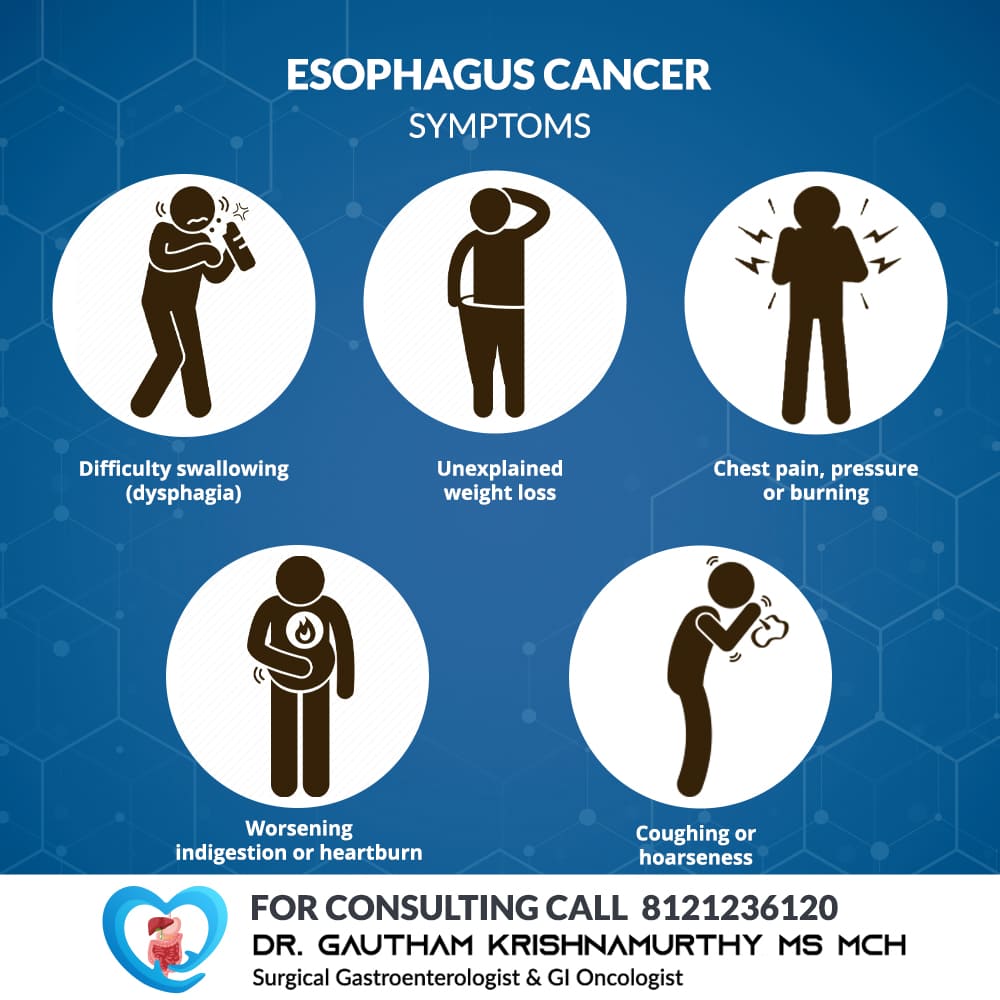
Esophagus
Commonly called as food pipe, it is located in the neck, chest and abdomen. It is responsible for transporting food from throat to the stomach
- Initially considered as a mere conduit, recent understanding of the physiology of esophagus has resulted in better understanding of the numerous diseases affecting the esophagus.
- Symptoms of esophageal diseases include difficulty in swallowing food (dysphagia), pain while swallowing food (odynophagia), regurgitation, blood in vomiting (hematemesis), heart burn and respiratory problems.
- Common diseases affecting esophagus include reflux esophagitis, esophageal candidiasis, esophageal motility disorders (achalasia cardia, nutcracker esophagus and diffuse esophageal spasm), diverticulum and esophageal varices.

Stomach
Organ located in the upper abdomen responsible for temporary storage and digestion of food. It has the capacity to expand and store large quantities of food. It also performs important immunological functions.
- Receptive relaxation and accommodative reflex (the ability to expand significantly to receive and store food) is unique to stomach.
- Symptoms of gastric diseases include upper abdominal pain, early satiety, dysphagia, blood in vomiting (hematemesis), heart burn, abdominal distention, blood in stools, loss of weight and appetite
- Common diseases affecting stomach include acid peptic disease, gastric ulcer, gastric varices and gastric neoplasms.
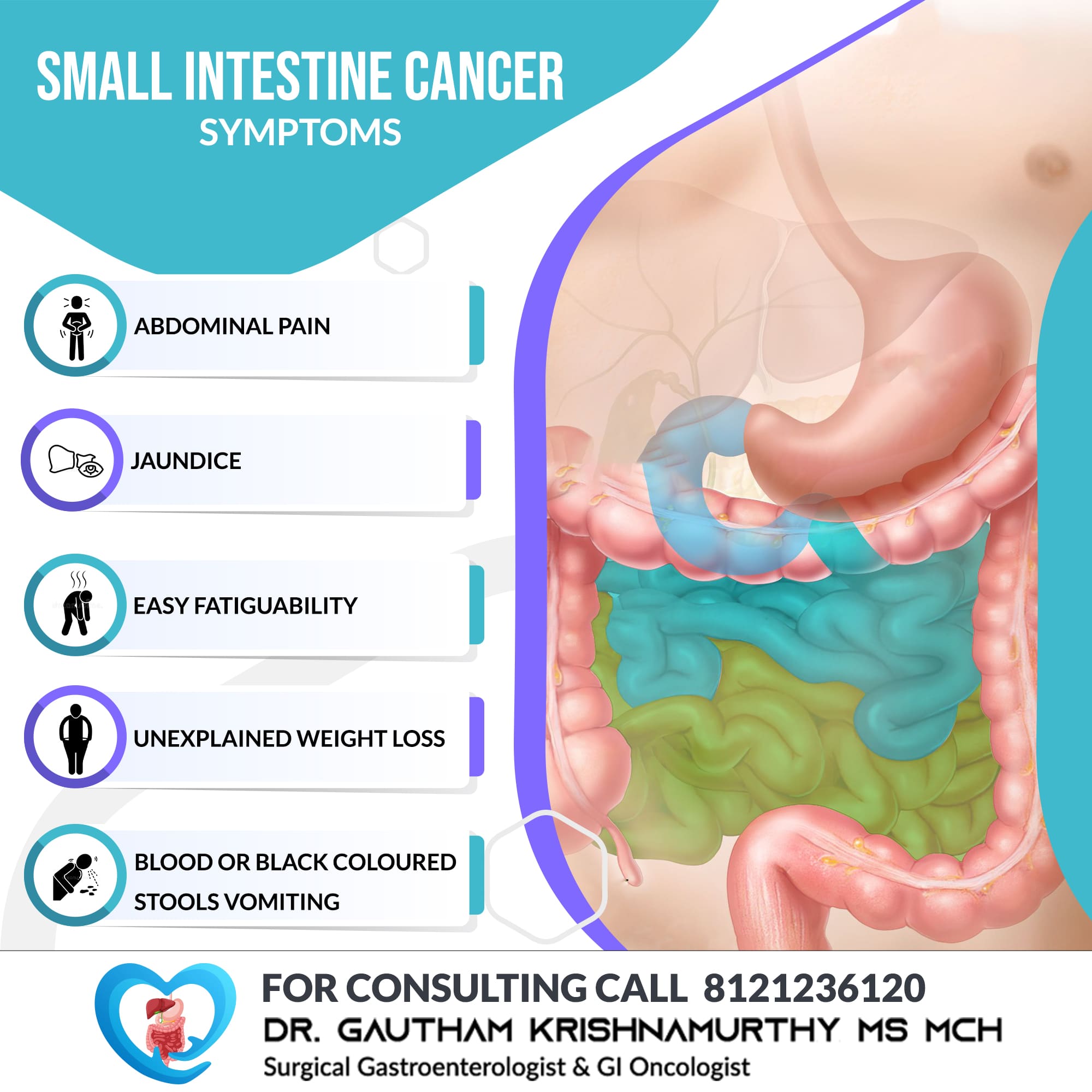
Small Intestine
Tubular organ located within the abdomen responsible numerous digestive and absorptive processes of food. It is called “small” intestine because of its smaller diameter when compared to the large intestine. The length of small intestine is many fold longer than large intestine. It comprises of duodenum, jejunum and ileum.
- Predominant site for digestion and absorption of carbohydrate, fat and protein occur in the small intestine.
- Symptoms include into abdominal pain, diarrhea, abdominal distention, vomiting, blood in stools, malnourishment, loss of weight and appetite.
- Common diseases include infection, ulcers, stricture, polyps and inflammation (inflammatory bowel disease). They can also be content of hernia.

Large intestine (colon)
Part of the intestine that is responsible for absorption of fluid and electrolytes. It comprises of caecum, ascending colon, transverse colon, descending colon and sigmoid colon.
- Predominant site of absorption of electrolytes and large quantities of water.
- Symptoms include into abdominal pain, diarrhea, abdominal distention, vomiting, blood in stools, malnourishment, tenesmus, urgency, constipation, loss of weight and appetite.
- Common diseases include infection, ulcers, stricture, polyps and inflammation (inflammatory bowel disease). They can also be content of hernia.

Rectum and anal colon
Final pathway for digestive processes. They primarily act as conduits for passage of stools.
- Symptoms include into diarrhea, abdominal distention, vomiting, blood in stools, tenesmus, urgency, constipation, loss of weight and appetite.
- Common diseases affecting rectum include infection, ulcers, stricture, polyps and inflammation (inflammatory bowel disease). Common anal diseases include fissure, fistula in ano and hemorrohoids
- Malignancy affecting rectum usually is adenocarcinoma. Anal canal malignancy can also be squamous cell carcinoma
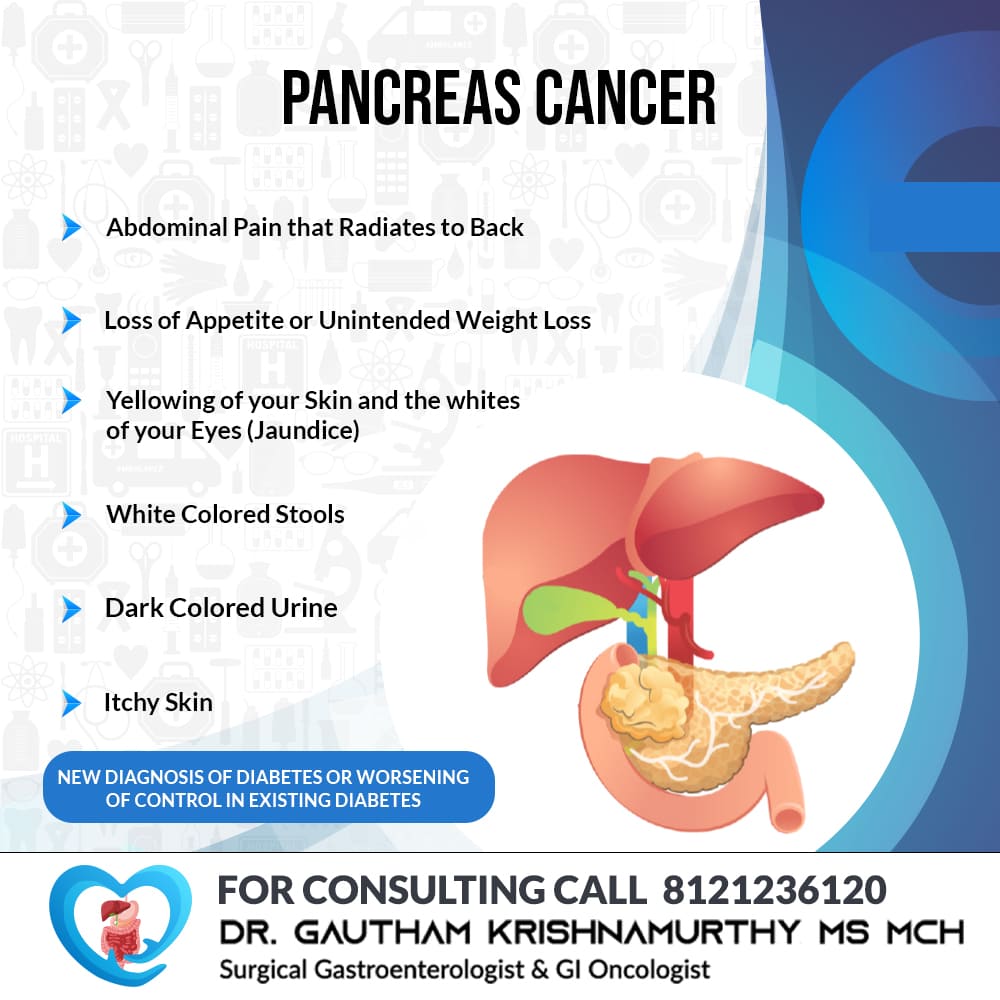
Pancreas
It is a leaf like organ located in the upper abdomen.
- It has two major functions. Secretion of enzymes (digestive – exocrine) and hormones (endocrine – predominately regulating blood sugar levels)
- Common diseases include pancreatitis (acute or chronic), pancreatic cysts
- Neoplasms affecting pancreas include adenocarcinoma, cystic neoplasms, acinar cell carcinoma and neuroendocrine tumor
- Investigations include computed tomography, magnetic resonance imaging and endoscopic ultrasound.

Liver
It is largest solid organ in the body located in the right side of upper abdomen. It is the place where numerous metabolic activities take place.
- Symptoms of liver disease include jaundice, abdominal distention, leg swelling, blood in stools or vomiting, altered sensorium, itching, generalized fatiguability and loss of weight.
- Common diseases include hepatitis (viral, drug induced, autoimmune etc.), cirrhosis, cystic lesions and hemangioma.
- Malignancy affecting the liver can be hepatocellular carcinoma, cholangiocarcinoma or secondaries from other sites.

